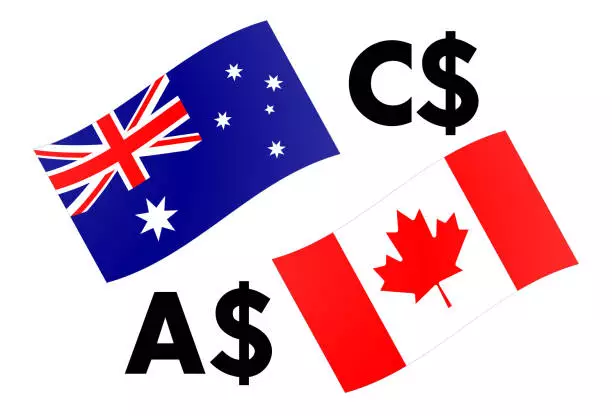As global economies navigate the precarious waters of international trade, the emergence of a potential “Trade War 2.0” threatens to reshape the economic narrative. While the initial US-China trade conflict initiated in January 2018 primarily focused on tariffs between these superpowers, the current phase broadens its scope to include other significant trading partners, most notably Canada, Mexico, and the European Union. This escalation hints at a more complex and intertwined global economic relationship, one that could provoke fears of stagflation—a combination of stagnant economic growth and inflation.
The implications of this expanded conflict can hardly be understated. Tariffs imposed by the U.S. on goods from Canada, Mexico, and remarks projecting potential levies on EU products signal a shift not just in U.S. trade policy but in global market dynamics. Speculative players within financial markets are rightfully concerned, as the anticipated repercussions could lead to reduced global demand and increased costs for consumers and businesses alike.
With prospects for global economic growth weakening, commodity-reliant currencies such as the Australian dollar (AUD) and Canadian dollar (CAD) are expected to face significant challenges. These currencies, which often reflect the health of resource-based economies, are particularly vulnerable to fluctuations in global demand driven by economic uncertainty. For instance, the Australian economy is heavily reliant on commodities like iron ore, while Canada’s fortunes are tied to oil exports, making both currencies proxies for broader economic performance.
In this complex interplay, the AUD and CAD may very well be at the mercy of external shocks stemming from geopolitical tensions and trade arguments. As a result, traders and investors should pay keen attention to key technical levels. For the AUD/USD, the pivotal resistance has been set at 0.6330, while the USD/CAD has a significant support level at 1.4300.
Recent market movements reflect the precarious situation for both currencies. Taking a closer look at the AUD/USD exchange rate, recent rebounds have been stymied by a resistance level around 0.6330, which corresponds to the downward-sloping 50-day moving average. This technical barrier serves to reinforce the ongoing downtrend since the September 2024 highs. Should the price slip below 0.6120, further declines could materialize, targeting critical support levels between 0.6030 and 0.5870. If, however, the pair manages to breach the resistance, a potential rally towards 0.6440 and even 0.6540 becomes conceivable, marking a shift in sentiment.
Conversely, the USD/CAD appears to be in a bullish posture, yet recent resistance at 1.4690 indicates a testing phase that could influence future trading strategies. The relative strength index (RSI) suggests that while the asset is nearing overbought territory, there has been no indication of a bearish divergence, which would usually preempt a significant drop. A failure to hold above the 1.4300 support level could unravel the current bullish trend and trigger a corrective pattern, dragging prices back toward the next key support of 1.3890.
Concluding Thoughts: Navigating Uncertainty
As the specter of Trade War 2.0 looms larger, market participants must remain vigilant in monitoring the shifting paradigms of international trade and their impacts on currency values. The fallout from these developments could have far-reaching implications for commodity currencies, whose fates are now closely intertwined with the unfolding geopolitical landscape.
Financial analysts and investors must adopt a dual approach—keeping a close watch on technical indicators while simultaneously considering broader economic narratives. Only through a comprehensive analysis can one truly gauge the potential volatility and risks involved in navigating the currency pairs affected by ongoing trade tensions. In the end, the global economy’s resilience will be continuously tested, inviting a cautious yet strategic approach in the face of an uncertain future.

